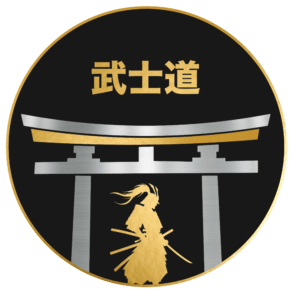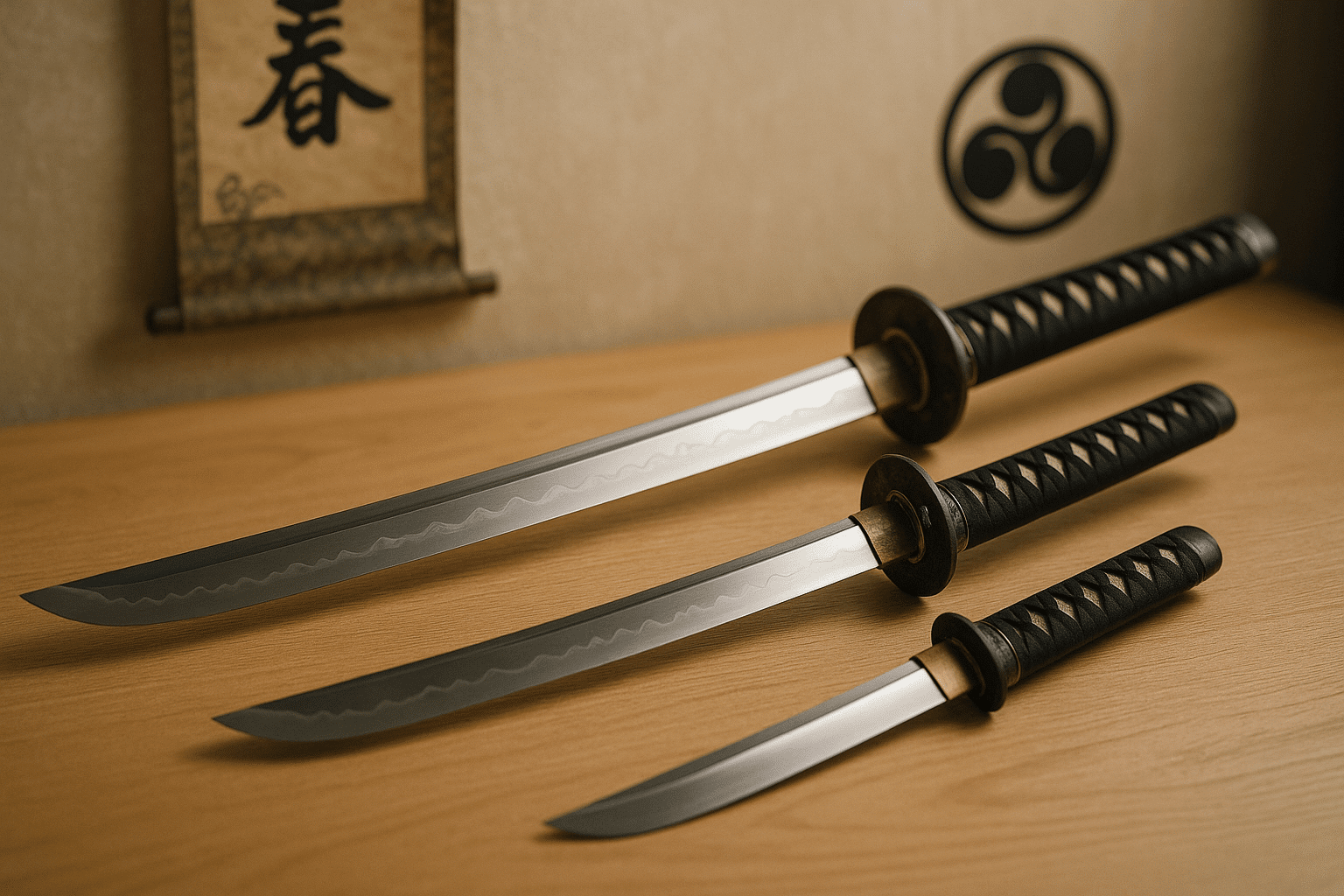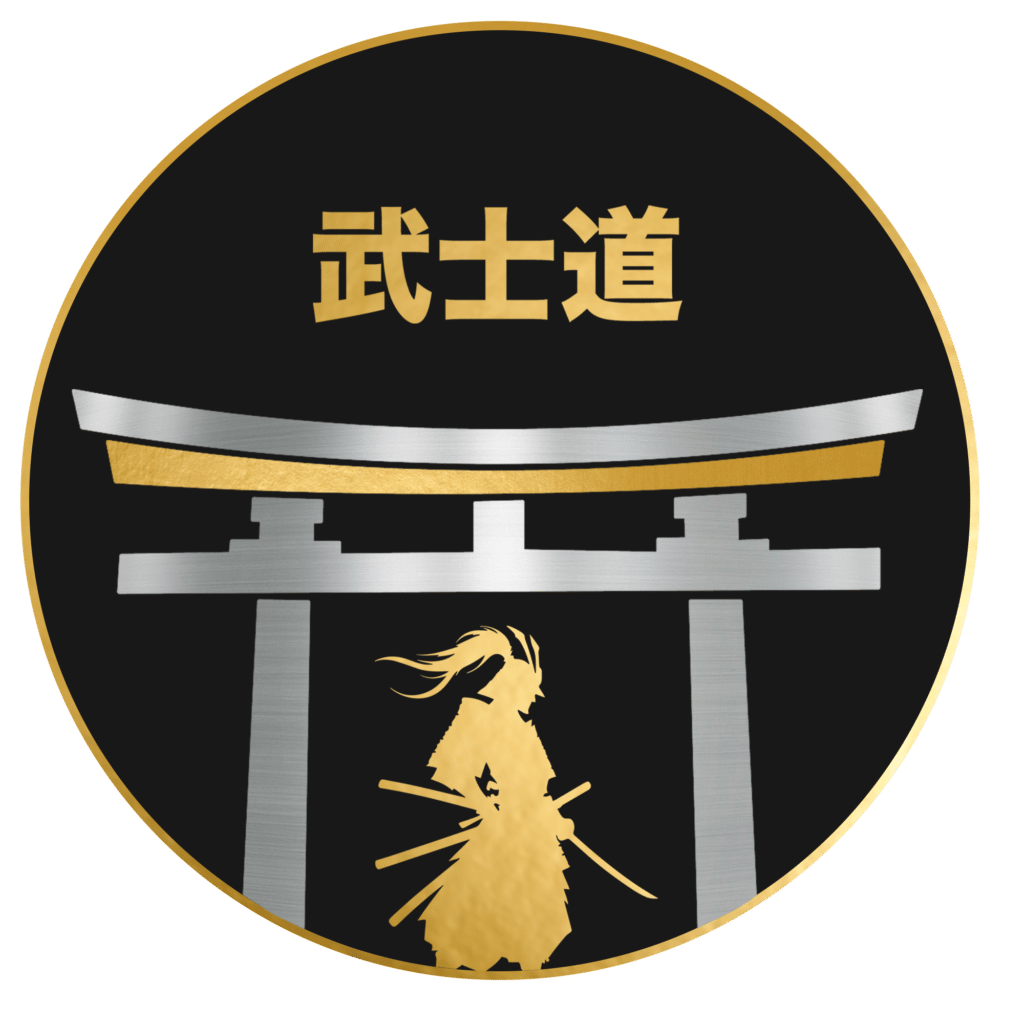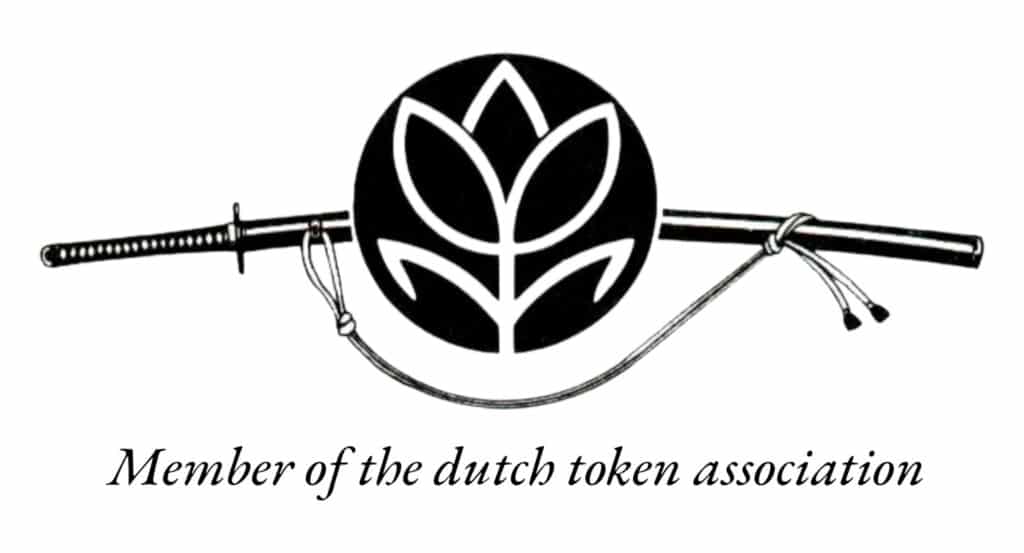Introduction: The Spirit of the Blade
A blade is more than steel. It holds intention. Respect. Purpose.
In the dojo, or on display, a sword speaks. Its balance, shape, and edge reflect its maker and its bearer. Choosing a blade is not just a purchase—it is a decision marked by care.
Whether your path leads to Iaido or to quiet admiration, your blade should honor both function and form. Each detail matters. Every curve and grain has meaning.
Approach this choice with stillness. Let understanding guide you. The right blade carries not just tradition, but your spirit.
Katana: The Sword of the Warrior Soul
The katana is more than a weapon. It is a symbol of the warrior’s spirit. Its curved, single-edged blade measures around 60 to 80 centimeters. The handle allows for a two-handed grip. The design is balanced—precise, efficient, and deliberate.
Historically, the katana was the sword of the samurai. Forged with care, it reflected the values of loyalty, honor, and discipline. Each one was unique, shaped by the hands of a skilled swordsmith and the soul of its future wielder.
In modern times, the katana remains central in martial arts like Iaido. Here, the sword is not used in combat, but in cuts, forms, and breath. Practitioners train to draw, strike, and sheathe with grace and control. With every movement, they honor centuries of tradition.
The katana teaches more than technique. It demands presence. Patience. Respect. Just as silence holds the sounds of the dojo, the katana holds the essence of the warrior path.
Wakizashi: The Companion’s Edge
The wakizashi is the samurai’s companion blade—shorter than the katana, but no less vital. Worn at the waist, it stayed close in halls, homes, and tight quarters where the longer sword could not serve.
Together with the katana, it formed the daishō, the pair that signaled samurai status. The long for battle, the short for precision, defense, or resolve. In moments where honor demanded swift, solemn action, it was often the wakizashi that answered.
Balanced in hand, its compact form allowed for agility. In duels, it became the edge in close quarters. In assassination or ritual, it served with finality.
The wakizashi was not just a weapon. It was presence, discipline, readiness. A symbol of the samurai’s inner life, carried always, even in peace.
Tantō: The Blade of Precision and Silence
The tantō is a short Japanese blade, typically under 12 inches. Its form is simple, straight or slightly curved, built for precision. Warriors carried it as a sidearm, close to the body and ready.
In battle, it served as a tool of last resort. At close range, silence matters. The tantō delivers—quick, direct action without flourish.
Beyond the field, it held meaning. Samurai used it in ritual suicide, the act of seppuku. Its presence in this context spoke of honor, not fear.
Crafted with care, the tantō was also a symbol. Displayed in the home, it reflected discipline, status, and heritage. Each blade told its maker’s story in steel.
Small, but never weak. Modest, but never overlooked. The tantō is grace made sharp.
Choosing for Display: Honoring Form
When choosing a blade for display, begin with respect. Consider its form, history, and presence. A display blade should speak without words.
Craftsmanship is central. Look for clean lines, balanced curves, and harmony in parts. The blade, the tsuba, the saya—each must reflect skill and intention. Flaws may tell a story, but they should never be careless.
Aesthetics follow function. Polished steel catches light—the right light enhances, not distracts. Choose calm backdrops. Natural tones. A simple stand of dark wood or lacquer cradles the blade without drawing attention away.
History deepens meaning. A blade from a known period or school carries weight. Even a modern replica can hold spirit if treated with care.
Placement shows your understanding. High, not hidden. Aligned, not askew. Do not crowd it. Let it breathe. Display with silence.
In doing so, you honor the sword—and the tradition behind it.
Choosing for Iaido Practice: Honoring Function
Selecting a blade for Iaido is an act of respect—for the art, for yourself, and for your journey. It begins with understanding purpose. Form follows function.
Start with weight. A blade too heavy disadvantages control; too light, it fails to build proper strength. Find a middle ground—challenging, but never exhausting. Your balance point should rest near the tsuba, inviting fluid draws and clean lines.
Length matters. Match the blade to your body. Too long disrupts precision; too short compromises range. Stand tall, let the blade rest by your side—the kissaki should reach just above your ankle. This is tradition shaped by practicality.
Balance brings harmony. A well-balanced blade moves with you, not against. It guides your cuts without force. Seek a sword that teaches you, not one that compensates.
Beginners often start with zinc-aluminum alloy iaitō—safe, durable, and maintenance-free. Advanced practitioners may shift to steel for weight and realism. Be honest about your level. Let growth decide when you move forward.
Choose with care. The right blade respects your stage, your goals, your discipline. Training is not about having more—it’s about wielding less, better.
Conclusion: One Path, Many Blades
The path of the blade is not one—but many. Each sword, each edge—designed with purpose. Some for sparring. Some for form. Some to test spirit under pressure.
Choosing a blade is not about preference. It is about alignment. With your practice. With your intention. With the stage of your journey.
A dull edge trains control. A live blade demands it. Wood, alloy, steel. Each tool teaches if you are willing to learn.
No sword is superior. Only better suited.
Walk the path with awareness. Let your hand match your heart. One path. Many blades. Choose with care. Train with presence.





